A NEW WAVE OF MUSEUM RESTAURANTS IN PARIS
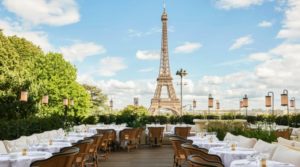
In a city that boasts over 140 museums, and a food culture that’s worth travelling from the other side of the world for, it a natural fit that there are going to be cafes and restaurants in certain Paris museums that are as worth visiting as the museums themselves. Some museum restaurants have become icons of good food and great ambience, such as the Café at Musée Jacquemart-André, and more recently, Alain Ducasse’s ‘Ore’ at the Chateau de Versailles and the Café Littéraire at L’Institut du Monde Arabe. Lately, there has been a quiet culinary revolution happening in the city’s museums.
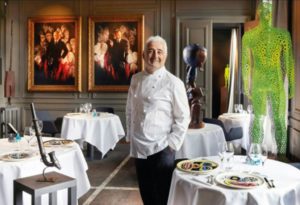
In recent years, collaborations between cultural destinations in Paris, both old and new, and star-powered chefs have formed mutually beneficial relationships. Great dining destinations have potential for bringing more traffic to museums, while on-site restaurants offer gastronomic respite for weary, thirsty and hungry museum-goers. Museum restaurants today add a lot of value because they offer a unique identity. They go beyond simple concession stands or dull spaces that sell over-priced sandwiches. They offer a lot more than coffee and cake and are dining destinations in themselves.
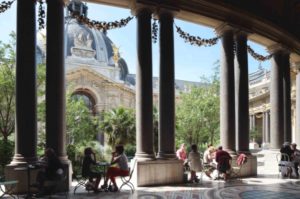
It isn’t all haute-gastronomie though: the standard of cuisine in Parisian museum cafes and restaurants is being upped across the board, and food lovers realise you don’t have to pay the entrance fee to sit down for a great meal in often stunning surroundings.
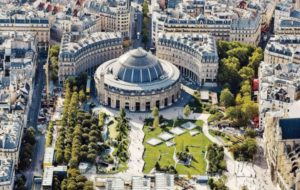
The Bourse de Commerce – Pinault Collection opened last European spring to much fanfare in Paris and the international art world. The building now houses the modern art collection of French billionaire François Pinault, whose company, the Kering group, owns luxury brands such as Gucci, Yves St Laurent, Bottega Veneta, Alexander McQueen and Balenciaga. Before it was restored and converted into an exhibition, the 18th century rotunda building originally served as the city’s Halle aux Blés (Corn Exchange). After a couple of changes of use, the building became the Paris Chamber of Commerce during the reign of Napoleon lll, which operated the Commodities Exchange there until 1998, when market activity ended in that location, due to the computerisation of the futures markets.
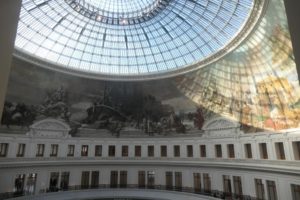
The conversion of the Bourse de Commerce into an art gallery was carried out by renowned Japanese architect Tadao Ando, who had created an art gallery for Pinault in Venice in the former Palazzo Gritti. Ando incorporated a restaurant, in the new conversion. Named ‘La Halle aux Grains’ in acknowledgement of the building’s first function, the restaurant’s third floor location offers both an interior view of the heart of the building and an exterior view of the city, stretching over the Église Saint-Eustache, the Canopée des Halles, Centre Pompidou, as well as the Tour Saint-Jacques and the rooftops of Paris beyond.
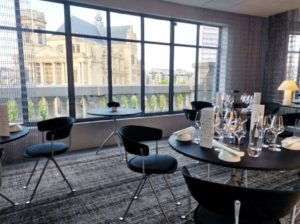
The chefs, father and son duo Michel and Sebastien Bras, who also have a famous restaurant, ‘Le Suquet’, in the Auvergne region of southwest France, are putting a contemporary spin on their menu and have included organic grains, cereals, legumes and seeds as the common denominators in every dish. The address is no. 2 rue de Viarmes in the 1st arr. Nearest metro: Bourse.
With picture postcard views of the Eiffel
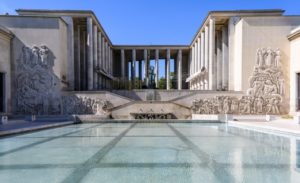
Tower and located in the Palais de Tokyo museum, restaurant ‘Bambini’ opened there a few months ago. The museum is dedicated to modern art and technology, and is the largest of this type in Europe. The impressive building was constructed in 1937 for the Paris International Exhibition, and designed from the start to house two separate museums: the Musée d’Art Moderne de la Ville de Paris, and the Musée Nationale d’Art Moderne.
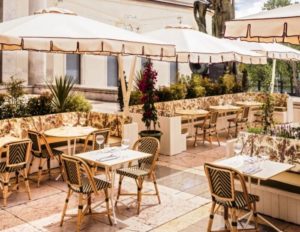
The museum has housed a number of different art collections, many of which have since been distributed to other galleries, while during the Nazi occupation, it became a warehouse for pillaged Jewish goods and property, notably hundreds of pianos, crates of clothes and personal items. Finally, in July 1999, the Palais de Tokyo became a contemporary art centre. A renovation of several of the indoor areas of the west wing in 2002, and another in 2012 created two restaurant spaces.
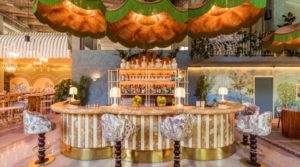
‘Bambini’ is the new concept of Laurent de Gourcuff and Laurent Taïb, art afficionados and super foodies. The food is distinctly Italian, easy, uncomplicated and modern. They also serve great cocktails, and the menu describes wicked desserts such as a Giant Tiramisu, a Fat Profiterole, and of course, gelati. It’s open for lunch and dinner Mon. – Fri. and at weekends from noon to 15.30.
The Palais de Tokyo is located at 13, Ave. du President Wilson in the 16th arr., and is directly in front of the Palais Galliera Museum of Fashion (see my recent blog about this wonderful museum).
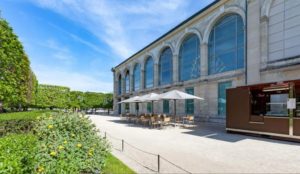
If you’re in the area of the Jardins de Tuileries, head to Place de la Concorde and the Jeu de Paume, which nowadays specialises in exhibiting modern photography. After taking in the latest exhibition, adjourn to the recently opened Café-Terrasse Rose Bakery in the garden, where you’ll find a selection of snacks, organic salads, soup of the day, quiches, a cheese selection as well as a plat du jour and a good choice of desserts. It’s well worth a visit. The Jeu de Paume is at 1, Place de la Concorde in the 1st arr. Nearest metro: Concorde. The museum is closed on Mondays. Note that the Musée de l’Orangerie, which is home to Monet’s enormous ‘Waterlilies’ series, is nearby on the other side of the Tuileries next to the river, and it also facing Place de la Concorde.
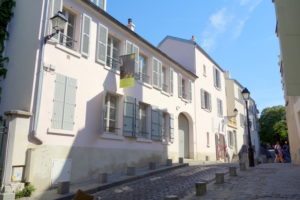
As anyone who’s ever been there can testify, Montmartre is cafes and restaurants from one end to the other—many not that great, but some quite good. One of the often-overlooked attractions (and the only one that takes us to Montmartre these days) is the delightful Musée de Montmartre – Jardins Renoir.
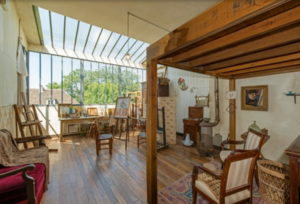
Created in 1960 and classified as a Musée de France in 2003 the building was once home to several artists including Auguste Renoir, Dufy and most especially, Suzanne Valadon and her son Maurice Utrillo.
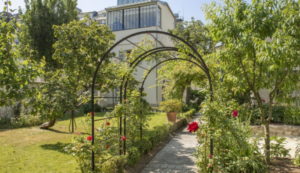
Just a few steps from the Sacré Coeur and Place du Tertre, the museum and its gardens offer a haven of peace and greenery away from the hordes of tourists who flock to the area. In the museum you’ll see Suzanne Valadon’s atmospheric studio, looking as though she has just stepped out for a moment. There is a permanent collection of art and photographs of famous occupants and their world, and memorabilia of the history of the Butte de Montmartre, its workshops, colourful locals and cabarets.
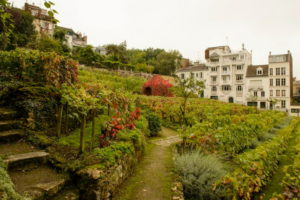
Most people don’t know that Montmartre is a Republic! Founded in May 1921 on the initiative of Montmartre artists, painters and draftsmen, the Republic’s dashing members distinguish themselves by wearing red scarves, black capes and hats based on the signature outfit worn by the cabaret singer and Montmartre nightclub owner Aristide Bruant. Their main purpose is to safeguard the charitable traditions initiated by Toulouse-Lautrec, Degas and Matisse. The iconic autumn Vendanges de Montmartre (wine harvest) and various concerts are worth checking out on the Republic’s website.
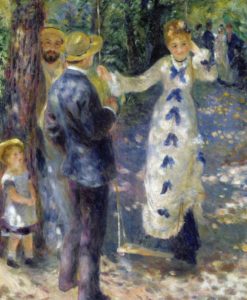
There are three gardens surrounding the Musée de Montmartre building dedicated to Auguste Renoir, who lived here between 1875 and 1877, and painted some of his most beloved works including the ‘Bal du Moulin de la Galette’ and ‘Le Balancoie’ (The Swing) during these years. The Renoir Gardens offer great views of the vineyard, the Clos Montmartre, and the northern cityscape of the city stretched out below.
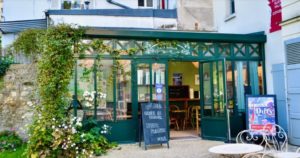
Overlooking the gardens is the delightful Café Renoir. With its pretty glass roof, it opens onto a lovely garden reflecting the work of Renoir. It was recently redecorated in the spirit of a winter garden, and now has a library, rattan lights, lounge area with period furniture and green plants. The atmospheric Café Renoir has a seasonally changing menu with salads, quiches, fresh vegetable soups and savoury tarts, and of course, tempting desserts, as well as a selection of gourmet products. The
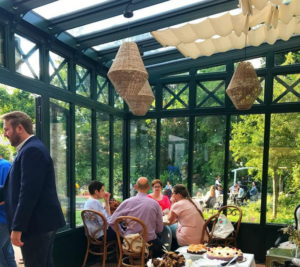
Montmartre Museum is at 12 rue Cortot, 18th arr. And is open every day except Tuesday. Metro: either Lamarck-Caulaincourt, Abbesses or Anvers. Alternatively, take bus no. 40, and alight at stop Saules-Cortot. There is garden access and entry to Café Renoir for €5, or with entry to the Museum €13. The Café opens Wednesday – Sunday from 11.00am – 5.00pm.
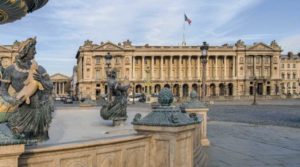
The Hôtel de la Marine is among Paris’s grandest neoclassical buildings, occupying a prominent site right on the Place de la Concorde. Built in the 18th century by Ange-Jacques Gabriel, chief architect of King Louis XV, until 2015 it was the HQ of the French navy (hence its name). Aside from European Heritage Days, it was rarely open to the public, and then with very limited access. After a major restoration, the Centre des Monuments Nationaux opened parts of the building, including the stately 19th century reception rooms, to visitors for the first time. The refurbished 18th century apartments are now also open to the public.
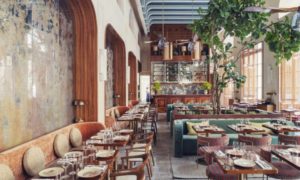
The museum now offers two eating venues in the main courtyard. Firstly, restaurant Mimosa, which is under the leadership of chef Jean-François Piege, who says his aim is to bring the spirit of the Rivera to the heart of Paris, and to “create an ode to France” and “produce a cuisine that…makes the sun and joie de vivre sparkle, like a permanent summer”. The key words that guided the interior designer were: nature, pleasure and sun.
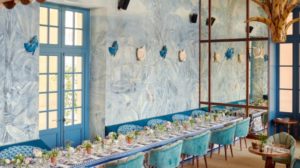
A more casual version is the Lapérouse restaurant which has just re-opened at the Hotel de la Marine, also in the main courtyard. In the summer months, guests can dine on the terrace and watch the bustling activity of the Place de la Concorde. Inside, the restaurant pays homage to the building’s naval heritage and the French naval explorer, Jean-Francois de Lapérouse, whose portrait hangs in the museum. The décor mixes 18th century opulence with Art Deco touches, while soft palm leaf motifs on the wallpaper, a colour scheme of marine blues and rattan furnishings evoke the sea and island exploration. The menu ranges from the traditional croque-monsieur to lobster rolls, foie gras or pâté en croute.
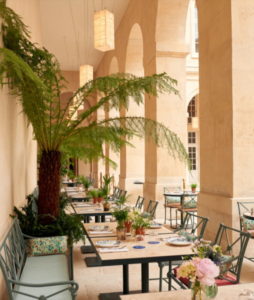
Café Lapérouse is a combination of restaurant, bar, cellar, grocery store, glacier-chocolatier, serving breakfast, lunch, afternoon tea, cocktails and drinks on the terrace, and dinner. The Hotel de la Marine is at 2 Place de la Concorde, and the nearest metro is Concorde.
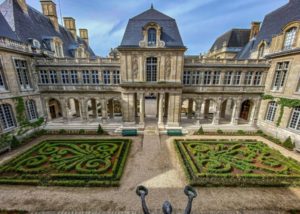
The Musée Carnavalet, devoted to the history of Paris, is the oldest museum in the city. It opened to the public on 25 February 1880 in the Hôtel Carnavalet, in the heart of the Marais district. The museum is now spread over two mansions which together represent over 450 years of history. After a closure for a major renovation that took more than 2 years, today, the Carnavalet – History of Paris museum brings together more than 625,000 works, from prehistory to the present day, providing a visit rich in experiences on many levels. Entrance to the museum is free to see the permanent collection, although there is an entry fee for special exhibitions.

New to the Carnavalet, a café-restaurant has been set up overlooking the gardens in a beautiful, leafy, quiet courtyard. Called Les Jardins de l’Olympe, it is run by a team of young women, headed by top chef Chloe Charles. She and her team are committed to focussing on a mainly vegetarian menu and zero waste. Since its first rave review from Le Monde’s food writer, with others following with similar high praise, the café has become very popular in the few short weeks since it opened.
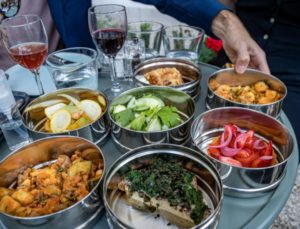
On the menu you’ll find such things as an all-yellow tartlet with gorgonzola, zucchini, artichokes, marinated peppers and hazelnuts, or all red, with tomatoes, peppers, onions and smoked mozzarella. There are flavoursome salads, and needless to say, divine desserts created by Andrea Sham. In the evening you’ll find ultra-sharp cocktails and natural wines, all at very reasonable prices. Les Jardins de l’Olympe is open Tues.- Sun. from noon to 11.00pm. The Musée Carnavalet is just a few minutes from the Place des Vosges, the most beautiful square in Paris. The Museum’s address is 23 rue de Sévigné, or the other entrance at 16 rue des Francs Bourgeois, in the 3rd arr., the Haut Marais. Metro: Chemin Vert or St Paul, and there are numerous buses that run along the nearby rue de Rivoli.
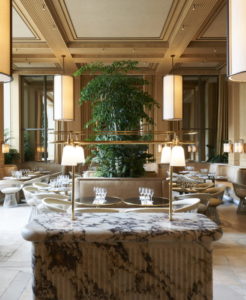
These are just some of the great restaurants and cafes located in museums. Others worth checking out are ‘Le 400 Coups’ at the Cinematheque Française, in a building designed by architect Frank Gehry, in the Bercy neighbourhood in the 12th arr.; ‘Restaurant Les Echansons’ at the Musée du Vin in Passy, which I mentioned in a recent blog on the area. If you’re after a fantastic view of the Eiffel Tower while you dine on great food, head to ‘Girafe Restaurant’ at the Cité de l’Architecture et du Patrimoine at the Palais de Chaillot, which I also talked about in another recent blog.
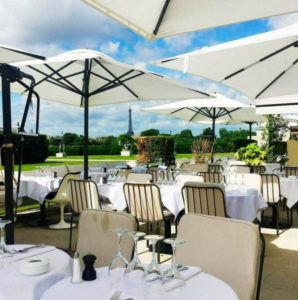
For a day when you’re feeling just a little bit chic, ‘LouLou’ is a rather swish restaurant full of white parasols and cushioned chairs at the Musée des Arts Décoratifs on rue de Rivoli that overlooks the Jardins des Tuileries and also has a view of the Eiffel Tower in the distance.
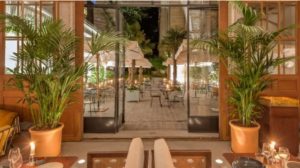
Another excellent restaurant to investigate is ‘Le Camondo’ in the magnificent Musée Nissim de Camondo, near the parc Monceau in the 8th arr., which I will write about soon. Check out any of these to enhance your museum visit, or just to experience good food in an interesting venue.
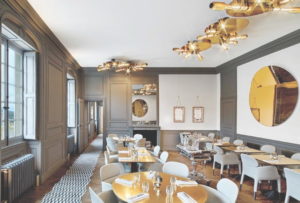


There is a restaurant (newish I think) called Loulou at Milsons Pt.
No view of the Eiffel Tower unfortunately but perhaps one of
the harbour. I’m going there for lunch on Tuesday.
Hi Nadine,
Somebody told us about LouLou recently (I forget who), and I made a mental note about it. I’ll be very interested to know your assessment of it, despite its lack of view of the Eiffel Tower. However, the Habour Bridge might do instead, although the food is the main attraction after all. Cheers, Cheryl
They all sound wonderful.Are you back from Paris ?
Hi Lois,
Great to hear from you! We are currently in Chalon-sur-Saone, in the southern Burgundy district. We took a train from Paris to Dijon last week, and spent a few days there, picked up a rental car and then moved on to Beaune. We’ve just spent days exploring many of the famous wine label villages such as Meursault, Givry, Savigny le Beaune, etc., as well as great fortress-chateaux, medieval Abbeys and quaint little villages. We haven’t been in Burgundy for some years, and it’s such a pleasure to be in this region again. Needless to say, the food is absolutely delicious and very suitable for accompanying the world-class wines! We’re in Burgundy for another 8 days or so, then return to Paris and fly home on the Easter weekend. It’s so good to be back, doing all the things we’ve missed for the last 2 years! Paris has so many new things since we were there last, I’ve got plenty of material for a couple of blogs once I’m back home.
Cheers,
Cheryl